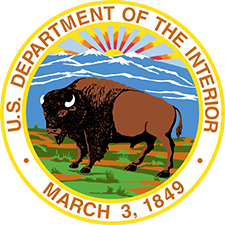With the approval of the Secretary of the Interior or authorized delegate, you, as a restricted property owner, can sell your land, purchase a new property of commensurate value using the proceeds from the sale, and have the restrictions transferred to the new property in a process called a 409(a) exchange. You must have title to your restricted property, which is confirmed by Certificate of Allotment, Restricted Trustee Deed, Probate decision, or other approved conveyance document.
The steps outlined below describe the process for this transaction:
1. Initial Contact: To initiate a transaction, you must submit a written request to our office indicating your interest to sell and exchange, and providing contact information of any other parties that may be involved in the transaction (i.e. – if working with a municipality or Village or Regional Corporation to “trade” parcels). When the request is received, a Realty Specialist will be assigned to the transaction.
2. Application & Counseling: The Realty Specialist will follow up with the landowner(s) to discuss the transaction, and any alternatives which may be available to them, and will send the landowner(s) an application to be completed and returned. The person you are selling to or exchanging with will also be counseled and if he/she is buying your land and would like to maintain its restricted status, then he/she will be required to submit proof of Alaska Native blood.
3. Appraisal Request: An appraiser will make a determination of the fair market value of your land, and of the parcel that you would like to transfer restrictions to. The Realty Specialist will submit an appraisal request to the Appraisal and Valuation Services Office (AVSO), and the appraisals will be completed at no cost to you. The appraisal report can take 18 months to two years to receive. You can contract a private appraiser at your own expense. The appraiser will need to submit their report to AVSO for review.
4. Archeological Inventory Request: An archeological inventory may be necessary and will be conducted by the BIA Archeology staff. The Realty Specialist assigned to your case will request a review from the Branch of Archeology. A recommendation from Archeology to proceed with the subdivision is required.
5. Environmental Assessment Request: Compliance with NEPA regulations is required. A Phase I report is also required for the new parcel that will have the restrictions transferred to it after the exchange. The Phase I must be completed by an environmental professional, and will be at the landowner’s expense.
6. Timber Clearance or Permit Request (if applicable): This is needed if there is any marketable timber that will be lost as a result of the sale/exchange.
7. Re-Counsel and Finalize Documents: After the Realty Specialist has received the Appraisal Report, you will be contacted for another phase of counseling. Once you have been informed of the value of your land, and if you still wish to continue with the sale process, the Realty Specialist will prepare the sale documents for your signature. BIA will only approve your sale if you receive fair market value or higher.
8. Report of Investigation: When all reports and documents are received, the Realty Specialist will prepare a Report of Investigation (ROI) detailing the transaction, and making a recommendation to the Regional Director or other authorized official.
9. Decision: The Regional Director or other authorized official will review the ROI and determine whether to approve or disapprove the sale.
- a. If approved, the deed will be signed by the Regional Director or other authorized official and returned to the Realty Specialist. The Specialist will forward the deeds to the BIA Land Title and Records Office (LTRO) for recording, and then record with the appropriate State Recorder’s Office. The original deeds will be returned to the landowners after recording.
- b. If disapproved, the landowner(s) will be notified of the action taken.
Any affected parties can appeal the decision, and will be informed of the appeal procedures.
10. Purchase of new lot and Title Insurance: The funds received from the sale of the allotment must be used to purchase the new property that you wish to have the restrictions transferred to. A title commitment will also need to be provided from a title company for the property that the restrictions will be transferred to.
11. Conveyance of Restrictions: Once the new property is purchased with the re-invested funds, and the title commitment and Phase I are submitted, a conveyance document will be prepared transferring the restrictions to the property. It will be signed by the Regional Director or other authorized official, and forwarded to the Land Title and Records Office for recording, and for the property to be added to the BIA’s system of records.
FOR FURTHER INFORMATION, CONTACT:
Bureau of Indian Affairs Alaska Region
Real Estate Services
3601 C Street, Suite 1200 MC-304
Anchorage, Alaska 99503-5947
(907) 271-4104


